Statistics show that high school and college-aged students like direct mail. Our direct mail is dimensional, interactive and engaging. With other colleges and universities soliciting the same top-prospect students that you are, direct mail from Red Paper Plane and Structural Graphics will make sure your message gets noticed and stays top-of-mind.
Here are a few ideas to get you started.
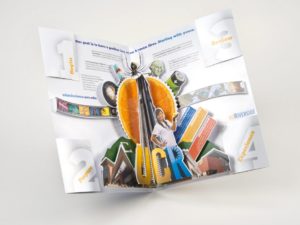 UC Riverside chose this dimensional folder to send out information about its different colleges to accepted students. The piece starts off as a seemingly flat printed folder, but when you open it up, an intricate pop-up immediately rises from the center. Each corner of the piece featured individual mini folders, each containing step-by-step instructions on how to get started with enrollment.
UC Riverside chose this dimensional folder to send out information about its different colleges to accepted students. The piece starts off as a seemingly flat printed folder, but when you open it up, an intricate pop-up immediately rises from the center. Each corner of the piece featured individual mini folders, each containing step-by-step instructions on how to get started with enrollment.
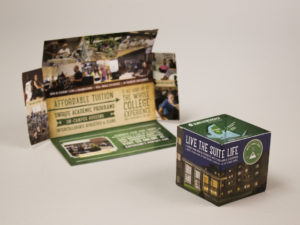 Our flat-cube is one of our most dynamic and exciting designs because of its ability to immediately make an impact with recipients. This one was used by SUNY Adirondack Community College to send information about its college to prospective students. The cube immediately pops up when you remove it from the mail sleeve.
Our flat-cube is one of our most dynamic and exciting designs because of its ability to immediately make an impact with recipients. This one was used by SUNY Adirondack Community College to send information about its college to prospective students. The cube immediately pops up when you remove it from the mail sleeve.
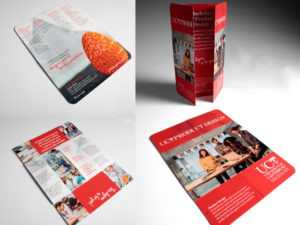 University of Canterbury used our Flapper to recruit students to its school and to promote its Product Design program. They chose the tablet-sized Flapper and displayed their information in a portrait layout. The inside of the colorful Flapper featured bright graphics that represented the key aspects of its product design program.
University of Canterbury used our Flapper to recruit students to its school and to promote its Product Design program. They chose the tablet-sized Flapper and displayed their information in a portrait layout. The inside of the colorful Flapper featured bright graphics that represented the key aspects of its product design program.
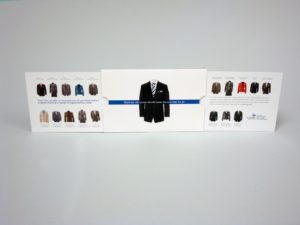 This clever Extendo mailer went out to prospective MBA students from the Georgia State University J. Mack Robinson College of Business. When you pull on one of the sides, the other sides pops out automatically – revealing a series of business jackets, each detailing one of the 4 MBA programs and 18 specialized master’s programs.
This clever Extendo mailer went out to prospective MBA students from the Georgia State University J. Mack Robinson College of Business. When you pull on one of the sides, the other sides pops out automatically – revealing a series of business jackets, each detailing one of the 4 MBA programs and 18 specialized master’s programs.
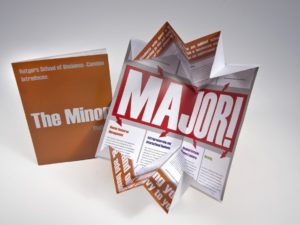 Rutgers School of Business used the Exploding Page design to deliver information about its business program to prospective students. The self-mailer appears to be a standard looking direct mail piece on the outside, but when opened up, it expands to twice its original size. The inside of the mailer contained information about the different programs offered by this prestigious school.
Rutgers School of Business used the Exploding Page design to deliver information about its business program to prospective students. The self-mailer appears to be a standard looking direct mail piece on the outside, but when opened up, it expands to twice its original size. The inside of the mailer contained information about the different programs offered by this prestigious school.
Fill out this form and we’ll send you an exciting sample pack!
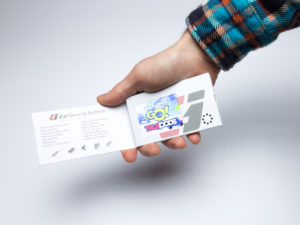 From Facebook and online ads, to YouTube and digital video, businesses have long had to compete with with the waning attention spans of their audience in the marketing arena. However, a newer technology offered by Structural Graphics and its online division, Red Paper Plane, might’ve just found that sweet spot.
From Facebook and online ads, to YouTube and digital video, businesses have long had to compete with with the waning attention spans of their audience in the marketing arena. However, a newer technology offered by Structural Graphics and its online division, Red Paper Plane, might’ve just found that sweet spot. But, just because your print piece has a video, it doesn’t mean that will guarantee its success. Design, message, packaging and production values contribute to the overall experience your customer or prospect has about your business. Here at Structural Graphics, we craft our Video in Print brochures by way of a high-tech, high-touch production process, allowing you to press proof your piece before shipping from one of our North American facilities.
But, just because your print piece has a video, it doesn’t mean that will guarantee its success. Design, message, packaging and production values contribute to the overall experience your customer or prospect has about your business. Here at Structural Graphics, we craft our Video in Print brochures by way of a high-tech, high-touch production process, allowing you to press proof your piece before shipping from one of our North American facilities.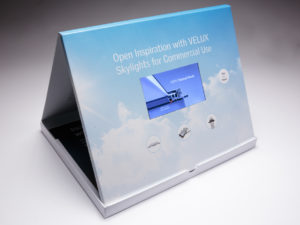 Not all Video in Print players are created equal. Speakers, video screen, battery packs and wiring can vary greatly in quality. Ensure your supplier uses top quality components and has a thorough quality control in place. We proudly have a 10-year relationship with our Video in Print player supplier.
Not all Video in Print players are created equal. Speakers, video screen, battery packs and wiring can vary greatly in quality. Ensure your supplier uses top quality components and has a thorough quality control in place. We proudly have a 10-year relationship with our Video in Print player supplier.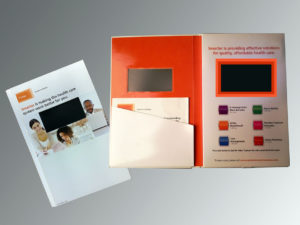 The power is in the playback. Make sure you choose the right file formats and the right settings for your video playback. We typically recommend a MP4, MOV, AVI or WMV video file format and a sound level of 75 to 80 dB. Also, double check that your supplier includes a USB cable for recharging the video brochure.
The power is in the playback. Make sure you choose the right file formats and the right settings for your video playback. We typically recommend a MP4, MOV, AVI or WMV video file format and a sound level of 75 to 80 dB. Also, double check that your supplier includes a USB cable for recharging the video brochure.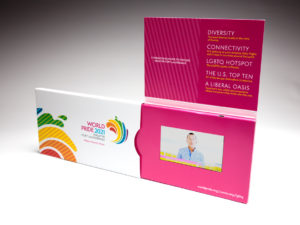 Short and sweet can’t be beat. Again, keep your audience’s attention span in mind. Video is a great way to deliver a 30 to 60 second message, but anything longer than that and you might want to consider breaking it into individual video “chapters”. Don’t forget the call to action so you can track responses.
Short and sweet can’t be beat. Again, keep your audience’s attention span in mind. Video is a great way to deliver a 30 to 60 second message, but anything longer than that and you might want to consider breaking it into individual video “chapters”. Don’t forget the call to action so you can track responses.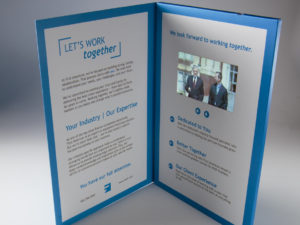 Source global, but inspect and ship local. Because Video in Print players are sourced almost exclusively from the far East, they’re often powered down to 30 percent of rated capacity to meet International Air Traffic Association regulations. This can negatively impact playback quality. At Structural Graphics, we fully re-charge our batteries, then ship them to our customers. Our battery configuration is approved by the US Post Office and is CE ROHS certified, which means that our product has met the standards for consumer safety, health and environmental requirements in the U.S. and Europe.
Source global, but inspect and ship local. Because Video in Print players are sourced almost exclusively from the far East, they’re often powered down to 30 percent of rated capacity to meet International Air Traffic Association regulations. This can negatively impact playback quality. At Structural Graphics, we fully re-charge our batteries, then ship them to our customers. Our battery configuration is approved by the US Post Office and is CE ROHS certified, which means that our product has met the standards for consumer safety, health and environmental requirements in the U.S. and Europe.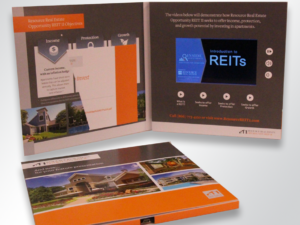 Experience, there’s no substitute for it. For more than 40 years, Structural Graphics has designed, produced and engineered unique, interactive print communications for some of the top companies in the world. Simply put, we know print.
Experience, there’s no substitute for it. For more than 40 years, Structural Graphics has designed, produced and engineered unique, interactive print communications for some of the top companies in the world. Simply put, we know print.